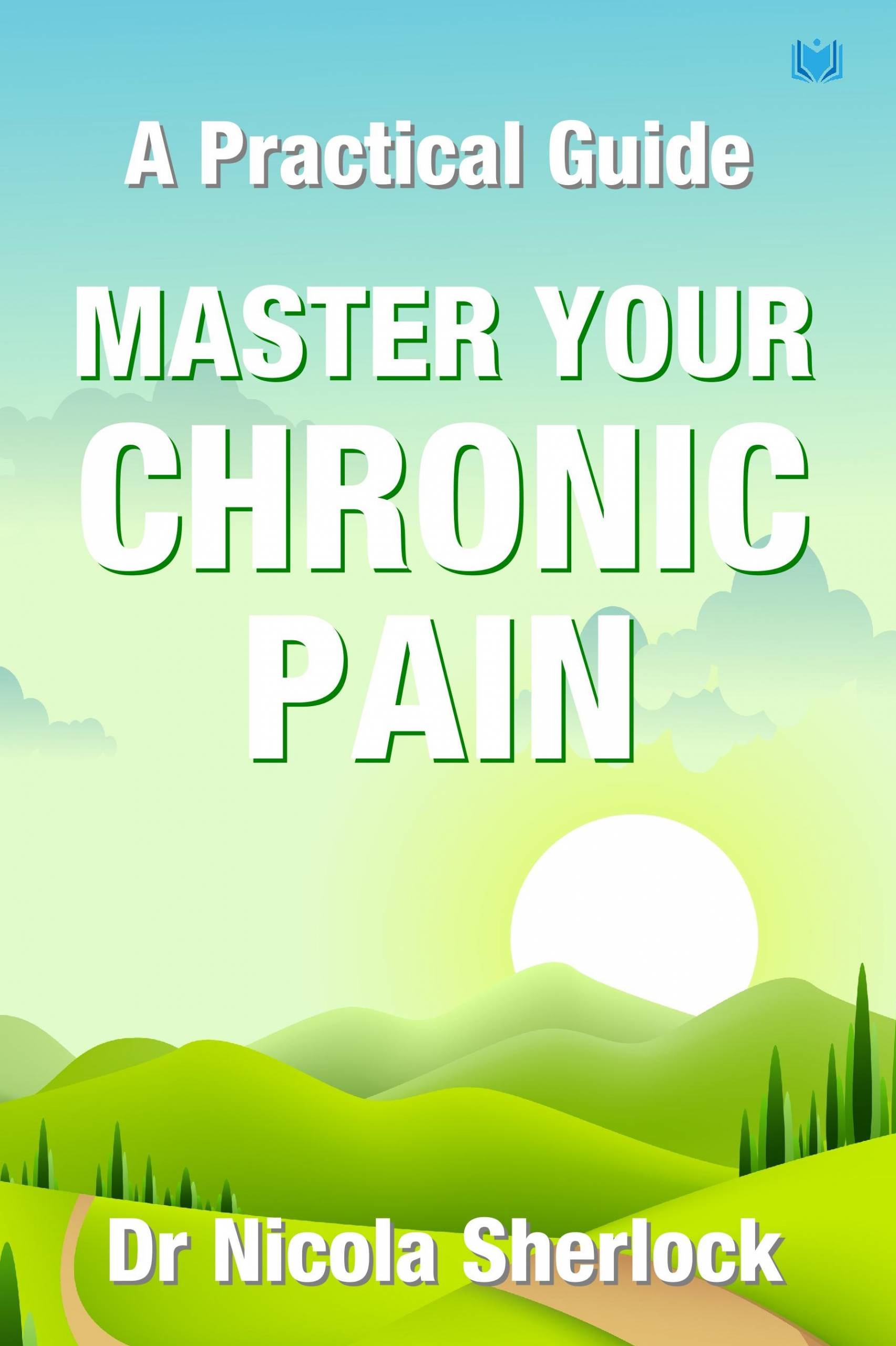
Master Your Chronic Pain: A Practical Guide

> Shows readers how to master their chronic or persistent pain
> Filled with lots of different ideas and pain management options – including mindfulness and mood management – choose what works best for you
> Written by one of the world’s top pain experts – Dr Nicola Sherlock
Do you want to manage your chronic pain and get your life back on track? Are you fed up with being held hostage by persistent pain and want to take action now? This book by chronic pain expert Dr Nicola Sherlock will show you how.
Chronic pain is a huge problem. It is estimated that between one third and one half of the adult population in the UK live with pain. In turn, many people struggle to manage their pain; they report that it affects nearly every aspect of their lives, and that they feel held captive by it.
Furthermore, the emotional impact of pain has been increasingly recognised, and it is recommended that treatments for chronic pain no longer rely on medication alone. However, it is difficult to find relatable, easy-to-understand information on the non-medical aspects of pain management.
Master Your Chronic Pain adopts a holistic view of pain. Each chapter looks at a different aspect of pain management, from the benefits of mindfulness meditation to overcoming a fear of exercise to strategies for improving sleep. The emotional impact of pain is discussed, and practical tips for managing stress, worry, and low mood are given. Strategies for managing thoughts and emotions are explored, and the impact of pain on relationships is examined. This book uses principles from Acceptance and Commitment Therapy (ACT) which has been established as a highly effective therapeutic approach in the management of chronic pain.
Through Master Your Chronic Pain, you will be able to take control of your condition. The interventions and techniques detailed have consistently helped to improve outcomes and reduce people’s reliance on medication. The techniques help people to live fuller, more enjoyable lives once more.
Through this practical book, learn to:
> Understand the nature of chronic pain to manage it better.
> Appraise the life values and motivations that underpin your journey away from pain’s control.
> Boost your energy levels and zest for life by eating smarter, sleeping better, and becoming more active.
> Manage the negative inner voices that constrain the life you desire.
> Become less rigid in your thinking and grow your self-confidence.
> Embrace the benefits of mindfulness to combat persistent pain’s obstacles.
> Handle stress, anxiety, and low mood to develop a life of increased independence and fulfilment.
About the author

Dr Nicola Sherlock has spent 20 years working in a pain service in the NHS, and has worked with thousands of patients who have shared their stories. Using these accounts and applied research from pain management studies, Nicola has helped many people to manage their pain and live better lives. In this book, Nicola shares her knowledge and expertise with compassion and understanding so that readers can master their pain and live better, more fulfilled lives.
* * * * *
*
Please be a superstar! and Buy Direct
[Free P&P to UK addresses. Fast turnaround. International shipping available]
* * * * *
When you purchase through select links on our site, we may earn an affiliate commission, such as through being an Amazon Associate, at no additional cost to you.

 * * * * *
* * * * *
Do you read your books on Kindle?

Kindle UK [click] | Kindle USA [click]
* * * * *
Full Table of Contents
PROLOGUE
INTRODUCTION
Why Should You Read This Book?
HOW TO USE THIS BOOK
CHAPTER 1: UNDERSTAND YOUR PAIN
The Good News and the Bad News
Acute Pain
Chronic or Persistent Pain
The Science of Pain
What Does this Mean?
A Closer Look at the Brain
Why Does the Brain Do This?
Why Does Pain Persist?
Thoughts and Feelings
Turning Down the Pain Volume
What is this Pain ‘Volume Dial’?
Turning Up and Down the Pain Volume Dial
Things to Remember
CHAPTER 2: FIND YOUR WHY
Why do You Want Your Life to be Different?
What Gives Meaning to Your Life?
Clarify Your Values
Things to Remember
CHAPTER 3: BECOME AWARE OF YOUR INNER VOICE AND GET TO KNOW YOUR PASSENGERS
A Closer Look at How the Mind Works
We Know that Our Thoughts Do Not Control Our Behaviour
Techniques for Managing Passengers
Things to Remember
CHAPTER 4: GRADUALLY BECOME MORE ACTIVE
How Important is Exercise to You?
The Benefits of Exercise
How Confident are You to Exercise?
Barriers to Becoming More Active
Managing Fear and Anxiety
I Don’t Know What Exercise to Do or Where to Start
Work Out Your Baseline
I Don’t Have The Energy
I Don’t Have The Motivation
I Don’t Have The Time
I Am Too Embarrassed to Exercise
Things to Remember
CHAPTER 5: BECOME A RULE BREAKER
The Homemaker
The Gardener
Back to You
The Three Ps
The Mother
The Provider
Pacing
Learning to Pace, Finding your Baseline
The Hiker
Increasing your Activity after you Establish your Baseline
Planning
Prioritising
Things to Remember
CHAPTER 6: BECOME MORE MINDFUL
The Storyteller Mind
What Can We Do About This?
What is Mindfulness?
The Benefits of Mindfulness
Mindfulness Meditation and Persistent Pain
What is Mindfulness Meditation?
How Can Mindfulness Meditation Change How We Relate to Our Emotions?
Become an Observer of Your Mind
How Do You Begin to Practise Mindfulness Meditation, and How Do You Become More Mindful?
Steps for Practising Mindfulness Meditation
Resources
Becoming More Mindful in Your Daily Life
Daily Mindful Practices
Noticing
3-2-1 noticing exercise
Mindful Breaths
Mindful Walking
Mindful Eating
Mindful Chocolate Eating
Things to Remember
CHAPTER 7: UNDERSTAND STRESS AND ANXIETY
What is Anxiety?
Anxiety may Affect your Body
Anxiety may Affect How you Think
Anxiety may Affect How you Feel
Anxiety may Affect your Behaviour
What is the Function of Anxiety?
Causes of Anxiety
Thoughts about Symptoms of Anxiety
Avoidance
A Word about Panic Attacks
What is a Panic Attack?
Anxiety and Persistent Pain
Things to Remember
CHAPTER 8: TECHNIQUES FOR MANAGING ANXIETY AND STRESS
Understand More About Anxiety
Learn how to Work with your Thoughts and Manage the Stories in your Mind
Ways to Manage our Tricky Mind
Engage in Problem-Solving
Have a Designated Worry Time
Breathe
Box Breathing
4-7-8 Breathing
The Abdominal Lift
Practise Progressive Muscular Relaxation
Make Time for Relaxation
Ground Yourself
Focus on your Breathing
3-2-1 Noticing Exercise
Tackle your Avoidance
Jessica and the Step-by-Step Approach to Overcoming Avoidance
Summary of the Steps for Working with Avoidance
Consider Reducing your Screen Time
Change your Posture
Do a Physical Activity
Practise Mindfulness
Watch your Caffeine Intake
Watch your Alcohol Use
Coping with Panic Attacks
Seek Professional Support if Needed
Things to Remember
CHAPTER 9: LOW MOOD AND DEPRESSION
What is Depression?
Emotions
Physical
Behaviour
Thoughts
Causes of Depression
Multiple Stressors
Adverse Childhood Experiences
Personality
Family History
Illness
Loneliness
Alcohol/Drug Use
Depression and Persistent Pain
Thoughts and Depression
Comparing Yourself Negatively to Others
Mind Reading
Mental Filter
Critical Self
Catastrophising
All or Nothing Thinking
Things to Remember
CHAPTER 10: MANAGE YOUR MOOD
Develop a Routine and Make a Daily Plan
Make Plans to Get into a Routine
Stay In Touch with Family and Friends
Increase Your Activity Levels
Become Mindful
Practise Mindfulness Meditation
Practise Gratitude
Types of Gratitude Practices
Gratitude Diary
Write a Gratitude Letter
Arrange a Gratitude Visit
Get a Daily Dose of Sunshine
Keep an Eye on Your Alcohol Intake
Take Your Medication as Prescribed
Seek Professional Support
Things to Remember
CHAPTER 11: SLEEP BETTER
What is the Function of Sleep?
Improved Memory, Concentration, and Learning
Reduction in Toxins and Reduced Risk of Cognitive Decline and Alzheimer’s Disease
Repair of Cells and Tissues in the Body
Reduction in Risk of Becoming Overweight; Reduction in Risk of Developing Type 2 Diabetes and Cardiovascular Disease
Increased Motivation to Exercise
Better Immune System
Increased Energy
Better Mental Health
Reduced Levels of Inflammation
The Mechanisms that Help your Body get to Sleep
Persistent Pain and Sleep
Why are Pain and Sleep so Closely Linked?
How Much Sleep do I Need?
Medication and Sleep
Techniques for Overcoming Sleeping Difficulties
Set a Sleep Schedule
Don’t Stay in Bed Tossing and Turning
Keep your Bedroom for Sleep
Take Electronics out of the Bedroom
Develop a Sleep Routine
Keep your Bedroom as Dark as Possible and Try to Stay Away from Bright Light Before Bed
Spend Time Outside Every Morning If Possible
Don’t Take Caffeine After Lunch
Recognise the Impact of Alcohol on Sleep
Consider the Temperature of your Bedroom
Become More Active During the Day
Practise Mindfulness Meditation
Cope with a Racing Mind
Practise your Breathing
Avoid Heavy, Fatty or Sugary Foods Before Bed
Things to Remember
CHAPTER 12: EAT WELL AND MANAGE EMOTIONAL EATING
Tips for Improving Your Diet
Drink More Fluids
How Much Fluid Should You Drink Every Day?
What Should You Drink?
Suggestions to Help You Increase Your Fluid Intake
Eat More Fruit and Vegetables
Reduce the Amount of Processed Food You Eat
What is Processed Food?
Reduce the Amount of Sugar in Your Diet
How Much Sugar Should We Consume Per Day?
Include Protein in your Diet
Try to Eat a Diet Rich in Omega-3
Simple Strategies Can Help You Manage Emotional Eating
Work Out Your ‘Why’
Plan Ahead
Consider What Your Mind Has to Say About Eating
Remember That Small Changes Count
Consider The Function of Food in Your Life
How Do You Recognise When You Are Distressed?
What is the Function of Eating for You?
Get Family and Friends On Board
Eat Mindfully
Recognise That You Don’t Have to be Perfect
Seek Professional Support
Things to Remember
CHAPTER 13: MAINTAIN GOOD RELATIONSHIPS
Assertive Communication
Assertive Communication and Pain
Persistent Pain and Sexual Relationships
Tips for Working on your Sexual Relationship
Talk to your Partner
Gradually Work Your Way Towards Becoming More Physically Intimate
Pace Yourself
A Sense of Humour Goes a Long Way
Don’t Be Afraid to Seek Professional Help
Things to Remember
CHAPTER 14: PUTTING IT ALL TOGETHER
Setting Goals
Types of Goals
S > Specific Goals
M > Measurable Goals
A > Achievable Goals
R > Relevant Goals
T > Time-Based
Self-Compassion
What is Compassion?
Affirmations

